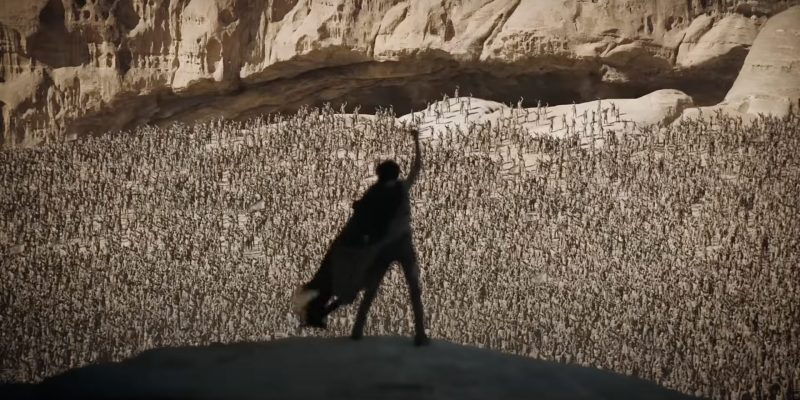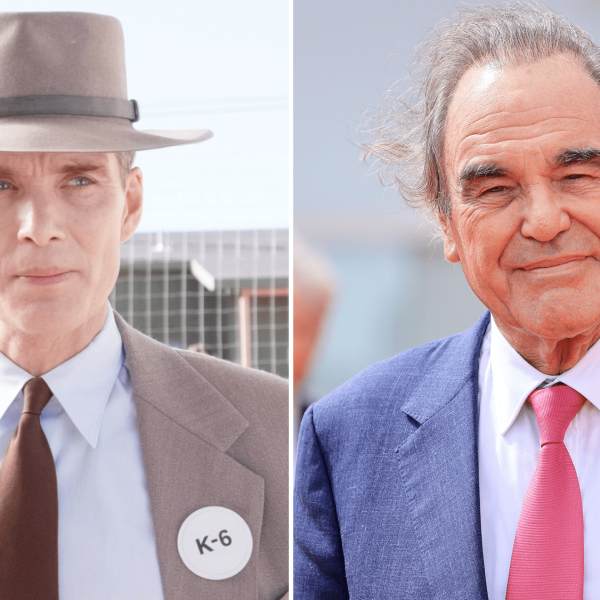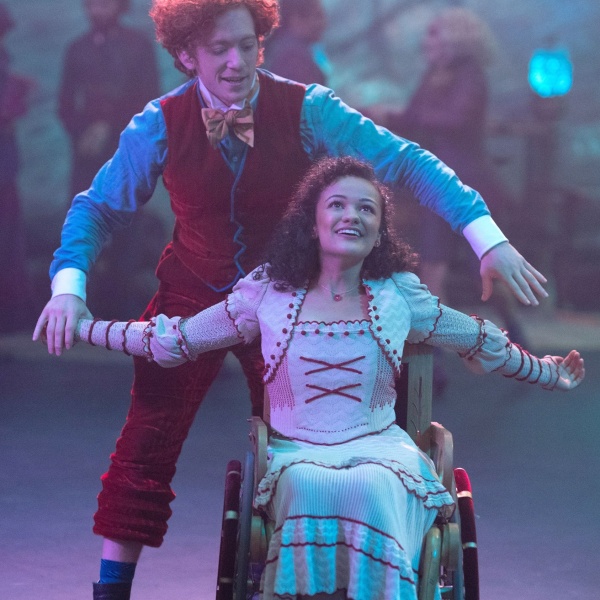With “Dune: Part Two,” it’s become even clearer that Denis Villeneuve has transformed Frank Herbert’s classic sci-fi novel into a high-octane “Lawrence of Arabia” in space: an epic love story and political adventure, in which Paul’s (Timothée Chalamet) would-be messiah fulfills his prophecy and leads the nomadic Fremen in a holy war on the desert planet of Arrakis. He’s more Michael Corleone than Luke Skywalker — an antihero overcome by a thirst for vengeance and power. It’s the director’s ultimate sensory spectacle, fueled by beauty and pain, with his use of image and sound even more expressive.
For Oscar-winning editor Joe Walker (“Dune”), cutting “Part Two” was almost like riding the sandworm into the heat of battle as a desert guerilla fighter. That’s because the emphasis was on action, which demanded a faster pace, more compression of time, and less exposition. However, at two hours and forty-six minutes, the runtime is only 11 minutes longer than “Part One,” making room to expand upon Chani (Zendaya), Lady Jessica (Rebecca Ferguson), and Stilgar (Javier Bardem) while also introducing Austin Butler’s Harkonnen baddie Feyd-Rautha, Florence Pugh’s cunning Princess Irulan, and Léa Seydoux’s seductive Bene Gesserit, Lady Margot.
“We wanted the film to shift as nimbly as possible between the ‘bignormous’ and the intimate,” Walker told IndieWire, “while still devoting time to craft Paul and Chani’s relationship.” For example, the scene leading into the adrenaline-soaked worm ride is a vulnerable little moment, spoken in whispers, as Paul and Chani wake inside a tent.
“In terms of our editing process,” he said, “the most significant focus was on scene positioning. Editing a big ensemble film is like making an Alexander Calder mobile. Lean too heavily on one aspect and the whole thing tilts; spread the storylines too evenly and it’ll damage the impact of the design. It’s a delicate juggling act.”

It was a long time before Villeneuve let Walker read the script for “Part Two,” and he spoke to his editor in code about the need for a faster pace. “He was preparing me for something that was more intense in many ways,” Walker continued, “not just in terms of the amount of action and those very ambitious action sequences, but also the intensity of performance in the way it was shot. It’s generally closer, more dynamic, we’re closer to the characters, and we get to enjoy them at greater length.”
This suits the director’s approach to sci-fi action, which is character-driven and shot practically, whenever possible, such as when everybody runs underneath the Spice harvester, which was a build by Oscar-winning production designer Patrice Vermette and not all VFX. But hand-to-hand combat (such as Chani’s oner) was choreographed like a dance and sometimes utilized mo-capped actors and stunt players. This was put together by DNEG (production VFX supervised by “Dune” Oscar winner Paul Lambert). Editorially, Walker was able to focus on point of view. But then, as the shots get wider in the final battle, with a slew of sandworms storming the Harkonnen accompanied by explosive pyrotechnics, it turned into a “fandango” for Walker to navigate. Fortunately, the main and second units functioned like a well-oiled machine, which made it easier to feed footage daily to the VFX beast.
Yet nothing was more important and demanding than Paul’s first ride atop the sandworm as part of his Fremen initiation into manhood. It was shot practically in the desert as part of a separate “worm” unit and took more than three months to complete. Chalamet stood on a platform with gimble as a sandworm set piece, with gripping devices imitating the Fremen hooks, surrounded by an industrial fan that blew sand on the set.
“Of the ride, you’re getting it in pieces, so it’s like a jigsaw puzzle, and you have to kind of cut it with your best intention of how it’s going to turn out,” Walker said. “The thing Denis used to talk to me about was it was like being on the back of an old bus going to school in Canada, and how the thing would go banging over the bumps in the road, and that if you were at the back of the bus, then you’d feel the axle underneath your ass, and that the worm is trying to shake Paul off at some point.”

Yet one of the hardest sequences to edit was actually the very first they shot, in which Feyd-Rautha fights in the gladiator pit as a birthday celebration, attended by his uncle, the Baron (Stellan Skarsgård). It takes place on the artificial Harkonnen planet of Giedi Prime, where the black sun casts a weird monochromatic look (shot in infrared by “Dune” Oscar-winning cinematographer Greig Fraser).
Usually, the fights are rigged by drugging the contestants, but this time, the Baron had a surprise for his nephew and the crowd. “It’s absolutely one I spent a lot of time on,” said Walker. “Trying to kind of really ram home the idea of what that scene is all about. It isn’t just a fight. It’s the Baron testing this playboy’s mettle as a potential Emperor in the space of one fight, and he does that by not drugging the greatest fighter of the three. We were trying to shape it a little better, especially because we have multiple angles on things.”
Walker was shocked at his first glimpse of Butler as the bald Feyd-Rautha, whom he described as a “venal-looking vampire,” but he relished cutting him. Yet he was most impressed with the maturity, self-assuredness, and generosity displayed by Chalamet and Zendaya, which was important because they are the heart of the movie. “They mesh together beautifully, Timothée and Zendaya,” he said. “The scene on the dune — where they cement their relationship — went virtually unaltered from the original cut.

“I love that she only really sanctions Paul once he proves his bravery in battle, and even then with caution. Chani is the audience’s surrogate [displayed through revealing closeups], grappling with Paul’s choices and compromises as the story progresses. And Paul talks to her with such integrity and humility. I think he’d stay a noble Fremen forever were it not for the machinations of the religious zealots or the way his family’s house has been locked in ancient cycles of revenge.”
Walker enjoys spending long periods of time in the cutting room shaping these stories with Villeneuve, and looks forward to finishing the trilogy with “Dune Messiah” (written by Herbert to make it clearer to readers that Paul is an antihero). “‘Part One‘ was setting things up, and ‘Part Two’ was dominated by battles and at its heart about revenge,” he said. “I’ve only read the book, ‘Dune Messiah,’ but it poses a brilliant question, which is everyone wants to kill Paul, but how do you assassinate somebody who’s seen everything coming?”



